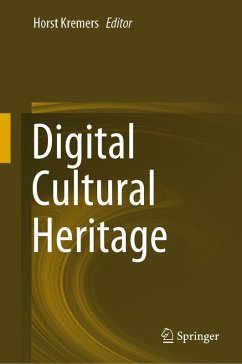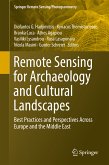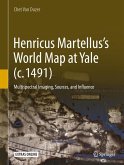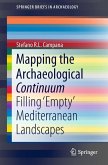This book provides an overview of various application spheres and supports further innovations needed in information management and in the processes of knowledge generation. The professions, organizations and scientific associations involved are unusually challenged by the complexity of the data situation.
Cartography has always been the central field of application for georeferencing digital cultural heritage (DCH) objects. It is particularly important in enabling spatial relation analysis between any number of DCH objects or of their granular details. In addition to the pure geometric aspects, the cognitive relations that lead to knowledge representation and derivation of innovative use processes are also of increasing importance. Further, there is a societal demand for spatial reference and analytics (e.g. the extensive use of cognitive concepts of "map" and "atlas" for a variety of social topics in the media). There is a huge geometrical-logical-cognitive potential for complex, multimedia, digital-cultural-heritage databases and stakeholders expect handling, transmission and processing operations with guaranteed long-term availability for all other stakeholders. In the future, whole areas of digital multimedia databases will need to be processed to further our understanding of historical and cultural contexts. This is an important concern for the information society and presents significant challenges for cartography in all these domains.
This book collects innovative technical and scientific work on the entire process of object digitization, including detail extraction, archiving and interoperability of multimedia DCH data.
Dieser Download kann aus rechtlichen Gründen nur mit Rechnungsadresse in A, B, BG, CY, CZ, D, DK, EW, E, FIN, F, GR, HR, H, IRL, I, LT, L, LR, M, NL, PL, P, R, S, SLO, SK ausgeliefert werden.
Hinweis: Dieser Artikel kann nur an eine deutsche Lieferadresse ausgeliefert werden.
"The contributions in the volume offer useful insight into an array of possible solutions for practicing digital cultural heritage, acting as a cross-section of the state of the research field. They provide vivid descriptions of the practical aspects of the research projects and the reader should expect some technical proposals, as many contributions aim to be systematic in their explanations of their methodologies, as well as of the tools they benefited from or worked on developing." (Stefan Trajkovic-Filipovic,KULT_online - Review Journal for the Study of Culture, Issue 63, April, 2021)
Es gelten unsere Allgemeinen Geschäftsbedingungen: www.buecher.de/agb
Impressum
www.buecher.de ist ein Internetauftritt der buecher.de internetstores GmbH
Geschäftsführung: Monica Sawhney | Roland Kölbl | Günter Hilger
Sitz der Gesellschaft: Batheyer Straße 115 - 117, 58099 Hagen
Postanschrift: Bürgermeister-Wegele-Str. 12, 86167 Augsburg
Amtsgericht Hagen HRB 13257
Steuernummer: 321/5800/1497
USt-IdNr: DE450055826
Bitte wählen Sie Ihr Anliegen aus.
Rechnungen
Retourenschein anfordern
Bestellstatus
Storno









